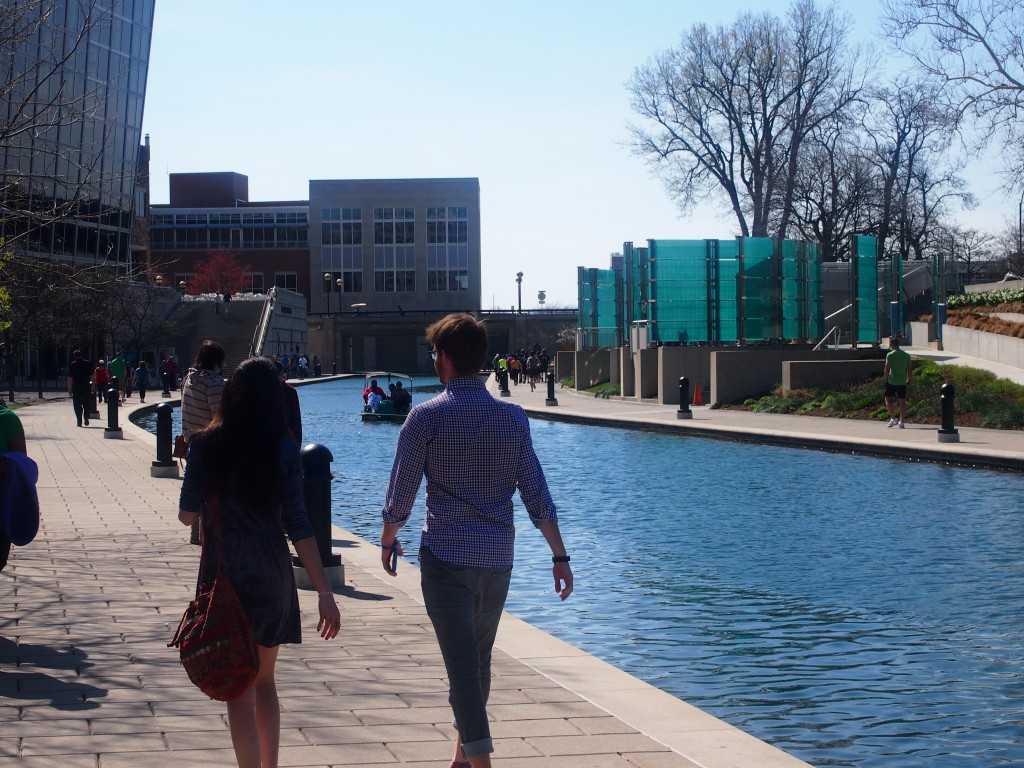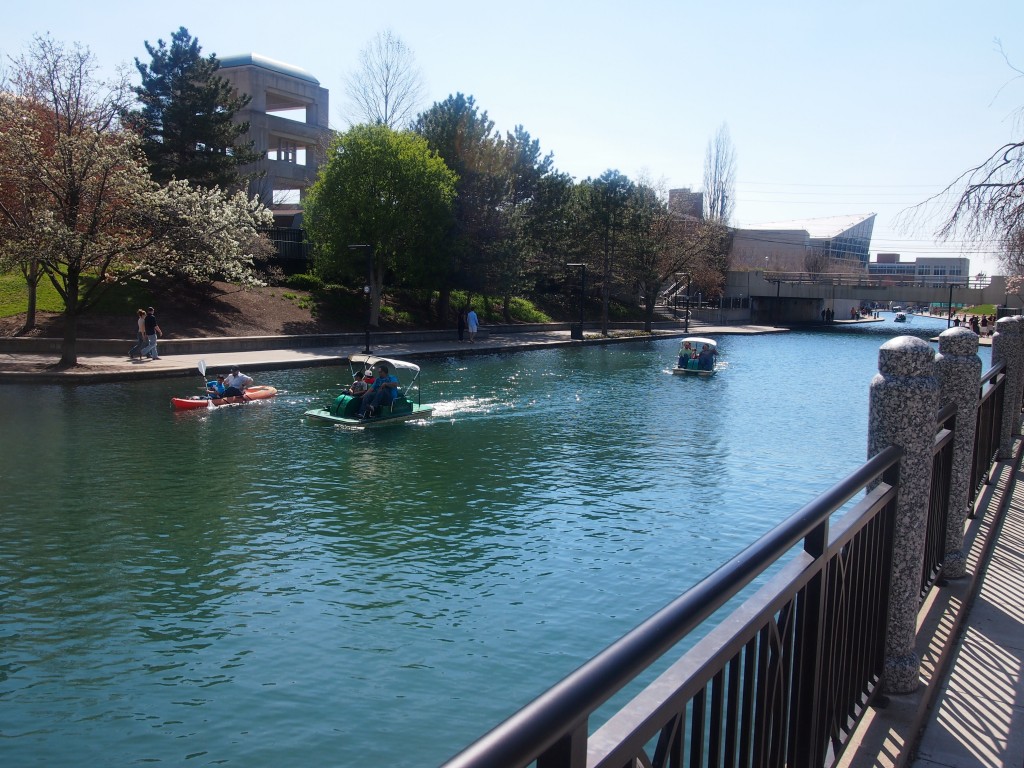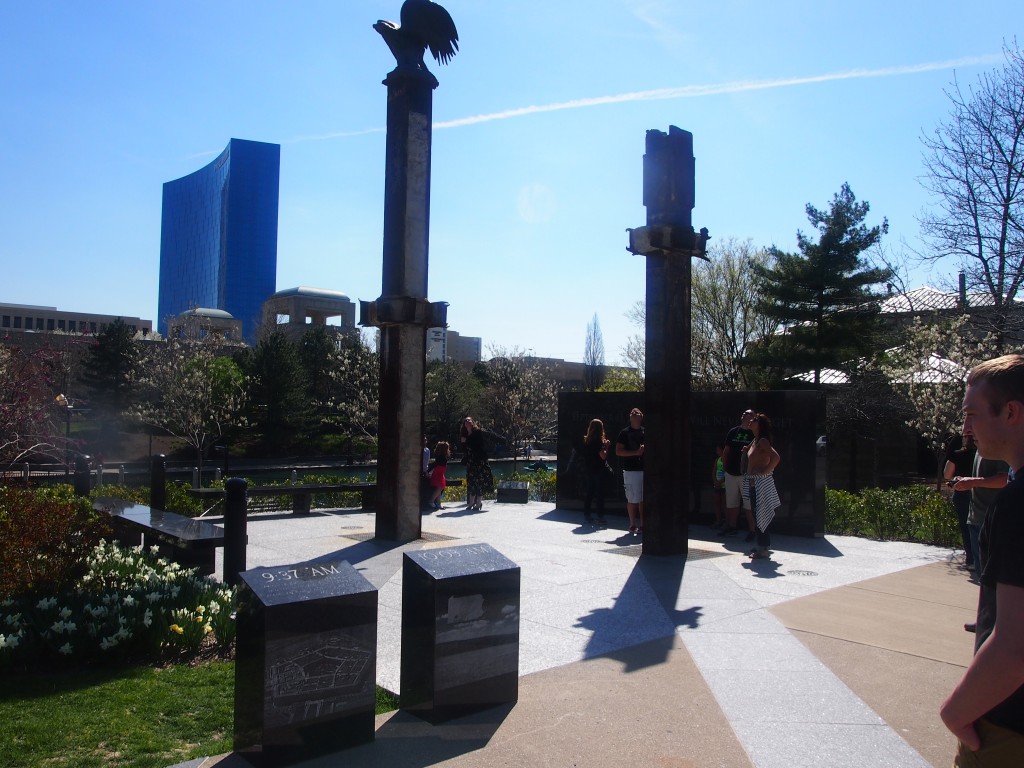Canals were all the rage in North America the 1830s, inspired by phenomenal success of the Erie Canal. Something like dotcoms were the rage in the 1990s, I believe, and that didn’t turn out so well either. Yet fragments of both investment-speculation manias survived the inevitable collapse, such as Peapod in the case of dotcoms, and a stretch of Indiana’s Central Canal from the earlier mania.
We spent some time on Easter Saturday afternoon walking next to Indiana’s Central Canal, which had been planned to connect the Wabash River in the northern part of the state with the White River in the southern part and then on to the Ohio River. Work began in 1836.
Then came the Panic of 1837. Only a few miles of the canal were ever built, running through Indianapolis. It’s had various uses over the years, but ultimately the canal-builders of the 19th century bequeathed recreational infrastructure to us in the early 21st century. It’s a pleasant place to stroll, or paddleboat or kayak, on a warm spring day.

 The last time I visited the canal was on a cold day in early 2005. It wasn’t quite so pleasant then, but I did notice the memorial to the ill-fated USS Indianapolis near the canal. This time we saw a memorial that wasn’t there in 2005, Project 9/11 Indianapolis, on a rise just above the waterway.
The last time I visited the canal was on a cold day in early 2005. It wasn’t quite so pleasant then, but I did notice the memorial to the ill-fated USS Indianapolis near the canal. This time we saw a memorial that wasn’t there in 2005, Project 9/11 Indianapolis, on a rise just above the waterway.
 The memorial was dedicated on the 10th anniversary of the attacks, and includes two 11,000-pound beams from the Twin Towers, standing upright. One of them has a bronze American eagle perched on top. It made me wonder: how many fragments of those buildings have made their way around the country?
The memorial was dedicated on the 10th anniversary of the attacks, and includes two 11,000-pound beams from the Twin Towers, standing upright. One of them has a bronze American eagle perched on top. It made me wonder: how many fragments of those buildings have made their way around the country?